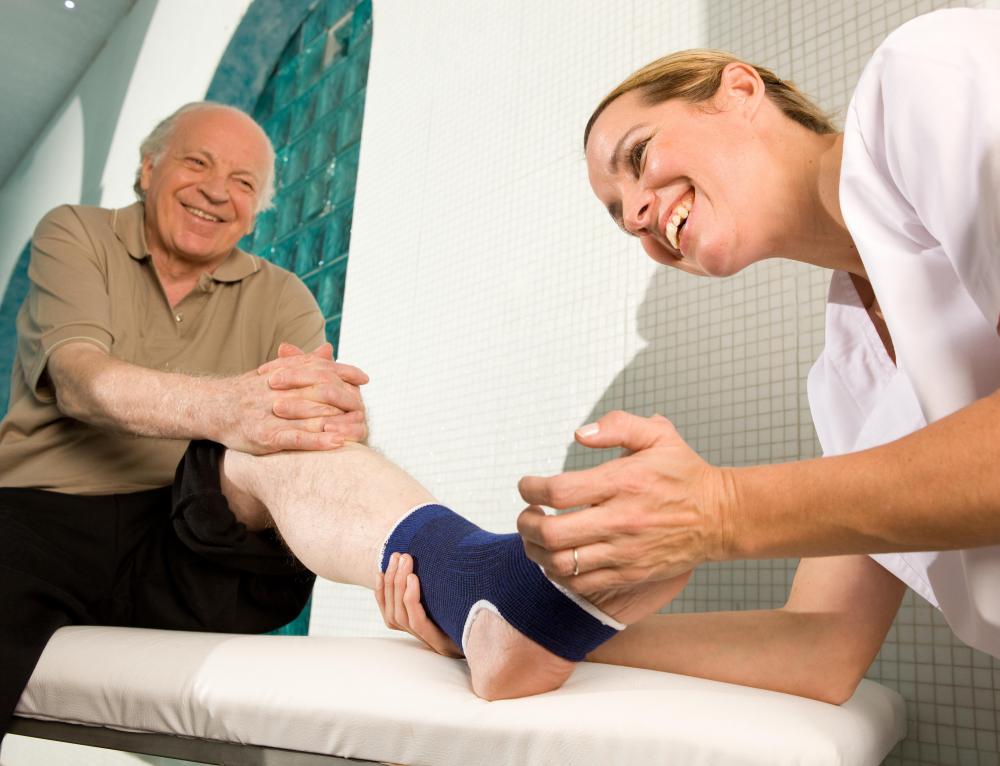At WiseGEEK, we're committed to delivering accurate, trustworthy information. Our expert-authored content is rigorously fact-checked and sourced from credible authorities. Discover how we uphold the highest standards in providing you with reliable knowledge.
What is Arthroereisis?
Arthroereisis is a surgical procedure that is performed to purposely impair movement in a joint. It involves implanting a small, hard piece of material inside a joint to prevent excessive bending or joint collapse. The procedure is most commonly performed to treat flat feet in adults who have suffered from the condition for several years without finding relief from other treatments. Because arthroereisis surgery is a relatively new procedure, there is some uncertainty among professionals regarding its usefulness and safety. Ongoing research and long-term clinical trials will help doctors and their patients make smarter decisions about considering joint surgery.
Flat feet arise when the arch and instep in the middle of the foot are too flexible: the subtalar joint responsible for keeping the foot's structure collapses when weight is placed on the foot. The subtalar joint connects the talus bone in the lower ankle to the calcaneus in the heel and instep. Physical therapy and anti-inflammatory drugs are usually enough to manage flat feet symptoms, but persistent problems may require surgery. A surgeon can either try to tighten supportive tendons or perform arthroereisis.

Before an arthroereisis procedure, an anesthesiologist or podiatrist administers a local anesthetic in the foot. A small incision is made at the base of the talus bone and clamps are used to hold skin and cartilage to the side. With the subtalar joint exposed, excess cartilage tissue can be removed to create a space for the implant. Most surgeons use hard plastic implants because they are durable and less likely to cause adverse allergic reactions in patients. The implant is screwed or compressed into the joint and the surgical wound is closed and treated.

Following surgery, a patient typically needs to wear a cast or brace for at least two weeks to give the joint time to heal. When the brace is removed, a podiatrist carefully examines the foot and takes x-rays to make sure that arthroereisis was successful. Patients generally need to rest for several weeks and then begin light physical therapy exercises to rebuild strength. Arthroereisis is occasionally performed on both feet at once, but in most cases surgeons prefer to wait several months between procedures to ensure good results and avoid completely impairing a patient's mobility.

There are significant risks with arthroereisis surgery, and many doctors are disinclined to suggest the procedure because of inconclusive evidence of its safety. Implants change the way joints are used to moving, and some patients develop intense pain in their feet after a few months or years. In such cases, implants have to be surgically removed and other treatment options considered. People who are considering surgery are encouraged to thoroughly research the procedure and speak with several doctors before making decisions.
AS FEATURED ON:
AS FEATURED ON:
















Discuss this Article
Post your comments